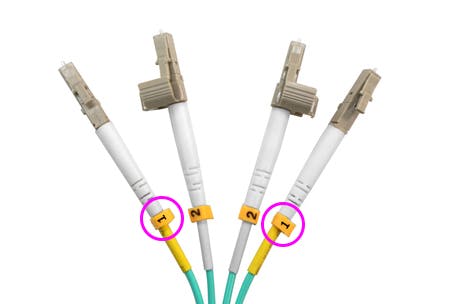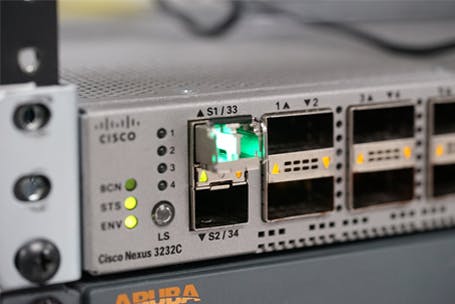Not getting a link?
A loopback test eliminates superfluous connections and confirms that a transceiver or port is functioning properly by connecting the transmitter and receiver of the same module. It requires a self-contained loopback module or a single strand of fiber. Creating a single strand of fiber out of a duplex cable takes a couple of extra steps.

1. Select Cabling

2. Remove collar and isolate both ends of the same strand of cable
How to perform and confirm a loopback test using a single strand of fiber:
1. Install transceiver or loopback module into switch. (If testing a module with a 40km or greater reach utilize the appropriate optical attenuator).
2. If using a loopback module the Tx and Rx ports will be connected to each other, if using a transceiver install the isolated ends of the same strand of cabling to the transmit and receive ports of the transceiver.
3. Once the ports are connected review the status of the link light. If lit, the port of hardware is functioning properly. If not, further troubleshooting is necessary.

Self-contained loopback module

Loopback created with single fiber strand
In conclusion, a loopback test is an easy way to confirm that your current hardware is working properly. There are many other factors involved including cabling, connection points and other network appliances but this technique will allow you to rule out those factors and confirm the functionality of your hardware.